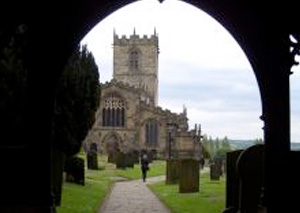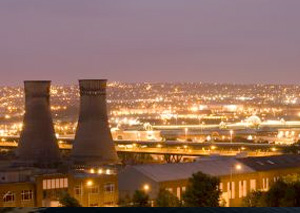Sell my car in Sheffield

Gary 'Gaz' Schofield: Folks don't laugh so loud when you've a grand in your back pocket. Dave: We may not be young, we may not be pretty, we may not be right good, but we're here, we're live and for one night only, we're going for the Full Monty!

Gary 'Gaz' Schofield: Folks don't laugh so loud when you've a grand in your back pocket. Dave: We may not be young, we may not be pretty, we may not be right good, but we're here, we're live and for one night only, we're going for the Full Monty!
Sounds familiar? If you’ve seen The Full Monty, you’d know that these are quotes from the 1997 comedy drama that depicted Sheffield in decline. The city’s once-thriving steel mills have closed, causing several employees to lose their job. So, a few men decided to form their own striptease group to gather money.
But Sheffield isn’t suffering from de-industrialisation these days. Sure, some areas need development and investment from big companies. But, overall, it’s thriving and going through a strong economic revival. In fact, it’s one of the top 10 “best cities to locate a business”, as stated in the UK Cities Monitor 2008. It has also placed a spot in “best office location”, “best new call centre location”, “availability of financial incentives”, and “greenest reputation”.
This means transactions ? from buying to selling -- aren’t difficult either. If you’ve ever asked yourself, “Can I sell my car in Sheffield and get good money for it?”, you’ll be happy to know that the answer is “Yes!”. That is, when you approach our team here at The Car Buying Group. We can help you sell for the fairest price possible.
If you haven’t lived long ? several years for instance ? in the city, you may have wondered if its situation is any close to the depiction in The Full Monty. Let’s find out.
Sheffield Timehop: Thousands of Years Ago

Its name is derived from the River Sheaf (previously Sceaf), which flows northward through Abbeydale and Heeley and then joins River Don.
Before the Middle Ages
The earliest proof of human occupation was around 12,800 years ago, during the late Upper Palaeolithic era. Then, it became the territory of the Brigantes ? tribe from the Pennines ? in the Iron Age. It was believed that they were responsible for building hill forts in and around the city.
The Celtics may have inhabited Sheffield too, wherein their presence was proven by two nearby settlements: Wales and Waleswood. Then again, the growing and merging settlements were of Danish and Anglo-Saxon origin and dated back to the second half of the first millennium.
12th ? 14th Century
William de Lovetot, Lord of the manor, founded Sheffield in early 12th century. He built a castle at the site where the River Don and River Sheaf joined to protect his settlement. It was burned in 1266 but reconstructed in 1270. He also constructed a church. The area between the church and the castle proved to be good for civilisation that a small town developed and became the centre during the modern era.
Sheffield was granted a charter in 1297. The document granted the people rights like an annual fair and a weekly market, which visitors from South Yorkshire attended. By the 14th century, the town has become notable for cutlery.
15th ? 17th Century
In the late 15th century, Bishop’s House was constructed. And in the 16th century, Sheffield turned out more popular for cutlery, especially when watermills were created to grind tools.
In the early 17th century, it was considered one of England’s main towns for cutlery ? other than London. Other trades boomed as well, e.g. spoon making from cow horn and wool weaving. Despite this, plenty of townspeople lived beyond the poverty line, some resorted to begging.
In 1628, a workhouse was built for the less fortunate so they would have a place to live and work. In 1624, the Company of Cutlers was founded, giving it power to designate items as artefacts once these reach a certain quality.
In 1642, a civil war between the parliament and the king ensued. This was followed by a series of seizing and attacks between the parliamentary soldiers and royalist army. In the end, in 1648, the former destroyed the castle to keep the latter from occupying it again.
18th Century
This period was all about growth and economic boom. A boys’ charity school was developed in 1707 and a hospital or almshouse was constructed in 1721. Assembly rooms for balls and card games were built in 1762, while the first theatre was constructed in 1763. The population increased quickly, wherein a 1763 survey stated the population as over 10,000. According to standards during this time, it was already large.
There were a lot of trade developments throughout the century, such as the discovery of the crucible steel and copper plating. Then, a lead mill and silk mill were constructed. Communications and transport also improved, and the River Don became navigable.
19th Century
This was mostly a bad time in Sheffield. The area earned the reputation of a grimy and unsanitary town. This wasn’t surprising at all, what with the presence of heavy industries within its boundaries. Then, in 1832, cholera spread and killed 402 people. A lot of people were also living in slums during this period.
But it wasn’t all bad news and poverty. There were improvements as well, including the development of middle-class suburbs and the founding of the Improvement Commissioners. The latter was an association of men with the authority to clean the streets. The streets were gas-lit and the first cemetery was opened. A corn exchange was also opened to allow the buying and selling of grain. Other establishments opened included a dispensary ? where less unfortunate people could get free medicines. Cutlers Hall and the Botanical Gardens were also opened. And Sheffield was turned into a city.
20th Century
The period was marked by population growth, industrial decline due to war and slum clearance. The population rose to over 400,000. German zeppelins bombed Sheffield, claiming 28 lives. After WW II, heavy industries ? such as cutlery, steel and iron ? declined and cases of unemployment increased. However, surgical instruments were still being made. Amidst all these, council houses were constructed in places like Park Hill, Hyde Park and Gleadless Valley. Shopping centres and a fire/police museum were also opened.
Sheffield: A modern city

Some areas may still need improvement but, overall, it has changed with time. The jobs market has shifted largely to knowledge-based services and the universities have resulted to a large population of students living in the city.
But the biggest improvement is in Sheffield’s tourism industry, with the opening of several places of interest. Accommodation options range from caravans to charming hotels, while attractions range from museums to gardens. Families and holidaymakers alike can take a walk or go cycling in parks, woodlands and the countryside. Big events include the Food Festival in May, Music in The Gardens in July and the Christmas Lights Switch On in November. Shopping means going to the High Street stores, designer boutiques and independent shops.
The city also has great cultural reputation, with many notable people from creative industries as well as arts, music and entertainment scene. Among its successful exports are the Arctic Monkeys, Def Leppard, Sean Bean, Dominic West and Richard Coyle.
You may have heard negative comments about Sheffield, but rest assured that adjusting in the city isn’t hard. Visiting here is fun, while living is convenient. And if you wish to engage in trade, such as selling your car in Sheffield, know that it won’t require a long process. That is, if you work with experts, so give us a call any time.
We will buy any car: